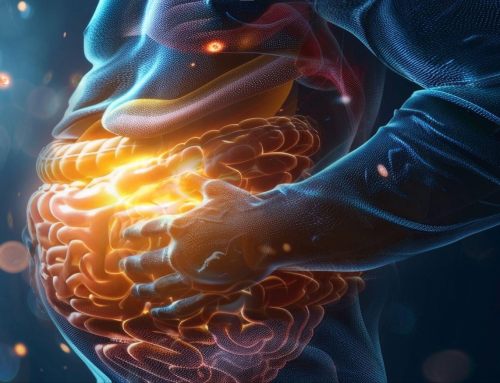Timing Hormone Replacement Therapy for Maximum Benefit
Human females are particularly attuned to cycles, with monthly cycles of hormones that allow fertility or, with the hormone’s dearth, prevent fertility. It should be unsurprising that adding exogenous hormones at particular points in a woman’s cycle could result in health benefits, especially at menopause, when menstrual cycles wane and eventually cease as a natural part of aging. Evidence for the health benefits of hormone therapy during menopause has been mounting in the scientific literature for decades, with study designs becoming more narrowly defined to tease out the details of hormone administration that would deliver the most health benefits.
A review published in The Cancer Journal in 2022 examines the evidence for the timing of hormone replacement therapy (HRT) being instrumental in reducing all-cause mortality and cardiovascular disease (CVD) incidence. This review by a medical doctor and a Ph.D. (Hodis and Mack) reveals the emergent clues across randomized controlled trials (RCTs), meta-analyses, and observational studies. Several factors highly influence the success of HRT in regards to lowering all-cause mortality and CVD, including at what age the therapy is begun, the time since menopause, the health of the tissue (arteries), and the duration of the hormone therapy. This article focuses on some of the highlights of the Hodis and Mack review.
Cardiovascular Disease (CVD)
CVD in Women – “Cardiovascular disease” is an umbrella term encompassing any disease affecting blood vessels and the heart, such as narrowed arteries due to plaque formation (atherosclerosis). The health focus on CVD in women is due to it being a top cause of death, killing approximately one woman every 80 seconds (1). One of every three women will die from CVD (2).
CVD, Sex Differences, & Estrogen – What initially garnered attention was evidence that post-menopause CVD risk went up as high as six-fold over pre-menopause risk within a specific age range for women. Yet, the risk in men did not scale the same way as in women, though both incur greater CVD risk as aging occurs. Women suffered worse statistics than men for dying after a myocardial infarction and having no symptoms but dying suddenly of coronary heart disease (CHD). The assumption was that estrogen was causing many of these effects. Women have more estrogen than men, accounting for the sex difference in CVD risk. Yet, when menopause occurs and estrogen wanes, the CVD risk goes up in women. Estrogen appeared to be the factor that lent some cardioprotective element, because having low estrogen levels for long periods is associated with increased risk for two types of CVD, stroke and heart disease (1, 3).
Window of Opportunity – As Hodis and Mack assert in their review, this leap in CVD risk after menopause “provides a window of opportunity” to use HRT to extend estrogen’s natural cardioprotection past menopause to lower the expected rise in risk (1). While the same therapy would not be appropriate for males, Hodis and Mack explore the mounting evidence that it is a reasonable and relatively safe method for lowering the risk of incidence of CVD and all-cause mortality.
HRT- A Brief Overview
The hormone estrogen not only plays a big role in the female reproductive cycle, but it is also involved in the maintenance of healthy bones, blood vessels, mood, cognitive health, and the control of internal temperature (4). As estrogen levels drop due to natural aging, symptoms may appear, including hot flashes, mood fluctuations, and weakening of bones (5). Low estrogen eventually causes menstruation to stop, with the stage of menopause being defined as at least twelve months past the cessation of menstruation. HRT replaces the diminishing endogenous estrogen with exogenous estrogen, either synthetic or natural. Other hormones may be supplemented as well, such as progesterone. These can be administered as injections, creams, sprays, or pills. The dosage and makeup of HRT formulations vary. However, the goal is the same, to replicate the natural rise and fall of reproductive and supportive hormones in the female cycle.
Setting the Stage: The “Healthy Endothelium Hypothesis” & the “Timing Hypothesis”
According to Hodis & Mack, the “healthy endothelium hypothesis,” which outlines the duality of the effects of estrogen on the formation of atherosclerosis, provides the basis for the “timing hypothesis.” The healthy endothelium hypothesis asserts that estrogen has two potential effects: positive effects through HRT on an intact, healthy artery lining (endothelium) that is free of plaques, but negative effects on plaques that are well-established on the artery wall (1). If HRT is initiated early enough, estrogen can decrease lesion progression and disrupt the progression of atherosclerosis through its ability to affect its binding and accumulation characteristics and lower LDL oxidation, respectively. On the other hand, if artery plaques are already established, HRT can increase lesion progression (1). These effects were shown in the results of the Prevention of Atherosclerosis Trial (EPAT) and the Women’s Estrogen-Progestin Lipid-Lowering Hormone Atherosclerosis Regression Trial (WELL-HART).
The timing hypothesis asserts that the age at which HRT is initiated and its temporal closeness to the onset of menopause are the significant factors in the progression of atherosclerosis and other clinical events (1). A preponderance of evidence in the scientific literature supports the timing hypothesis across many types of study designs – randomized controlled imaging trials on atherosclerosis randomized controlled trials, animal studies, and observational studies (1).
The Difference in Outcomes: Randomized Controlled Trials vs. Observational Studies
After the Women’s Health Initiative (WHI) randomized controlled trials (RCTs) results came out in 2002, the difference in outcomes from observational trials was quickly noticed. By 2002, over 40 observational studies had shown a reduction of coronary heart disease between 30%-50% when HRT was used versus not used, while RCT studies showed a null effect of HRT on coronary heart disease from women 45-90 that were randomly assigned to placebo or HRT (1).
Trying to reconcile these two outcomes between randomized controlled trials and observational studies led to the confirmation that the profiles of the female subjects in the two types of trials were very different. Women in the observational studies were younger (30-55 yrs of age) versus those over 63, their menopause onset was closer in time to the administration of HRT, the duration of the therapy was much longer than in the randomized controlled trials, and they weighed less (smaller body mass index), among other differences (1). Comparing the cohorts between the two types of studies provided additional support for the timing hypothesis, both in the difference of age and time since menopause (1). Note, body mass index (BMI) also differed between the cohorts, and according to other studies, does have an impact on CVD risk, so it may have influenced the efficacy of HRT to reduce CVD in the randomized controlled trial subjects (1).
The Picture Sharpens: HRT Observational Studies, Meta-Analyses, & DOPS
Two meta-analyses of randomized HRT trials plotted on a chart with observational studies and the Danish Osteoporosis Study (DOPS) help compare the range of relative risk estimates for each. All relative risk estimates were below 1.0, but some interesting things came to light (1):
- The observational studies, which had a cohort of women aged 30-55 with a time-since-menopause of less than 6 years, had the second highest but narrowest range of all the relative risk estimates.
- The Salpeter and Cochrane meta-analyses had much broader relative risk estimates when the age cutoff and time-since-menopause were a greater number of years (less than 60 years old, less than 10 years since menopause).
- The DOPS study, which will be discussed next, had the best (lowest) mean of the range of relative risk estimate, with a 50-year-old cohort and a 7-month time-since-menopause.
- Overall, the trend clearly shows a reduction in relative risk estimate when the cohort is younger or closer in time to the onset of menopause when HRT is initiated.
DOPS: Support of Time-since-menopause, Duration, CVD Reduction, & All-Cause Mortality Reduction
The Danish Osteoporosis Study (DOPS) is notable for a few reasons. It was a randomized controlled trial designed to use cohorts that matched the prior years’ observational studies, which showed HRT’s cardioprotective effects in the recently menopausal. Using women with an average age of 50 years old, lower BMI, and only 7 months past the point of menopause, the study was of the “longest duration of randomized HRT than any other RCT to date, and outperformed numerous studies in terms of risk reduction” (1). The subjects were randomized to HRT or no HRT and compared against each other. A reduction of 52% was achieved in the CVD incidence after 10 years of treatment, and a 39% reduction after six additional years with no treatment, at the 16-year mark (1). Remarkably, all-cause mortality dropped 43% after 10 years of randomized HRT and was still reduced by 34% six years after ending the ten years of treatment (1).
ELITE: Support of the HRT Timing Hypothesis
The Early versus Late Intervention Trial with Estradiol (ELITE) study was the only formal testing before May 2022 designed specifically with the HRT timing hypothesis in mind. Enrolling women that had no CVD, the subjects were randomly assigned to a placebo group or HRT in two groups separated further by time-since-menopause. One group had less than 6 years of time-since-menopause, and the other had more than 10 years of (1).
Arterial imaging results from the ELITE study showed that women who started HRT more than 10 years after menopause had no decrease in atherosclerotic progression. However, women who did start HRT very close in time to menopause showed a diminished progression of subclinical atherosclerotic factors when compared to the placebo group (1). A phenomenal p-value of 0.007 was obtained, indicating a highly statistically significant difference between the results of HRT and placebo in both time-since-menopause groups. ELITE not only helped confirm the HRT timing hypothesis but also indicated the underlying physiological mechanisms that drove the lower risk of CVD: reduction of the size of arterial lesions due to estrogen altering the lipoprotein profile.
Risks of Hormone Replacement Therapy
HRT is not without risks, and Hodis & Mack assert that the risks are no greater than other medications such as statins and aspirin (1). The majority of the identified risks of HRT can be put in the category of “rare to infrequent” as statistically, they will affect less than one out of 100 HRT-treated women (6). The HRT risks regarded as rare or infrequent are “breast cancer, stroke, and venous thromboembolism,” and it is noted that if HRT is started in women before age 60 and less than 10 years time-since-menopause, the risks are even smaller (6). Changing the formulation of HRT by adding progestin, a synthetic hormone that interacts with the progesterone receptor (7), can lower deep vein thrombosis risk even further (1). Indeed, the health practitioner exercising their judgment can choose forms of estrogen that present lower risks for a patient and employ HRT formulations with progestin that can further lower risks.
Implications for Health Practitioners
There is no single recommendation for all women regarding the administration of HRT to reduce the risk of CVD and all-cause mortality. Indeed, the decision to go forward with HRT should be made considering all known pre-existing conditions, family history, and personal health history (1). Genetic predispositions for managing blood sugar, cholesterol, and breast cancer should also be carefully weighed.
- HRT appears uniquely able to protect women in post-menopausal years from increased CVD risk and deliver a few additional perks, such as reduced new onset of diabetes, improved insulin resistance, and glucose uptake.
- HRT has a similar risk profile to other medications, for example, statins. While considered by most to be an acceptable level of risk for negative side effects, patients must be evaluated on a case-by-case basis to gauge individual risk.
- Timing of administration of HRT is crucial. If HRT is administered for women under 60 years of age (without atherosclerosis) at or near menopause, risks of all-cause mortality and CVD are significantly reduced. Considering the results from HRT in observational studies and the DOPS studies, a longer duration of HRT administration also yields more significant risk reduction.
- A deep look at pre-existing conditions is necessary to assess the risks of implementing HRT.
- HRT is not advised if breast cancer is prevalent in the family, the patient has had breast cancer, or the patient is genetically at higher risk (due to a BRCA1 genetic mutation, for example). Though HRT administration has a similar risk for breast cancer to statin medications, if HRT is administered in addition to any of these cancer-related factors, it creates an unknown risk profile. In general, it is thought that exogenous estrogen can stimulate estrogen-dependent cancers.
- If atherosclerosis (arterial plaque) has already begun, HRT does not deliver a benefit for lowering CVD. Carotid intima-media thickness (CIMT) imaging will help determine if arterial plaque is present. Existing plaques would negate the need for HRT for CVD risk reduction, as it would have no impact.
- The genotype of apolipoprotein 4 (ApoE 4, which comes with a higher risk of CVD) (8), its interaction with HRT administration, and its impact on CVD risk is not well-defined in humans (9). In ApoE deficient mice, the administration of estrogen prevented new arterial lesions in the endothelium but did nothing for established lesions (1). Because of the association of ApoE 4 to high cholesterol in humans, it becomes more important to screen for atherosclerosis before deciding on HRT, keeping in mind that HRT is not beneficial for lowering CVD for those with existing arterial plaque.
HRT for women can provide excellent risk reduction benefits for CVD and all-cause mortality with few serious side effects if administered under the right conditions. The knowledgeable practitioner can perform a cost-benefit analysis, with the administration of HRT being customized to the patient’s unique set of health factors. In healthy women, timing the initiation of HRT close in time to menopause and continuing it for a long duration decreases CVD and all-cause mortality, extending the many positive effects of estrogen upon the naturally cyclical female rhythms.
To learn more about hormones and HRT, please join us in learning more from leading experts during our free, live virtual webinars on June 20th and 27th. Click the links to learn more and register.
Optimizing Menopause: Understanding the Role of Hormone Replacement Therapy and Natural Remedies for Symptom Relief and Long-Term Health Optimization will be held June 20, 2023, from 4-6:30 pm PST, and Addressing Hormonal Imbalances in the Menstruating Female Using Natural Remedies, will be held June 27, 2023, from 4-6:30 pm PST.
Sources:
- Hodis HN, Mack WJ. Menopausal Hormone Replacement Therapy and Reduction of All-Cause Mortality and Cardiovascular Disease: It Is About Time and Timing. Cancer J. 2022 May-Jun 01;28(3):208-223. doi: 10.1097/PPO.0000000000000591. PMID: 35594469; PMCID: PMC9178928.
- Cardiovascular disease: Types, causes & symptoms [Internet]. [cited 2023 May 25]. Available from: https://my.clevelandclinic.org/health/diseases/21493-cardiovascular-disease
- Menopause and your health [Internet]. [cited 2023 May 25]. Available from: https://www.womenshealth.gov/menopause/menopause-and-your-health
- Hormone replacement therapy – what you need to know [Internet]. [cited 2023 May 25]. Available from: https://www.drugs.com/cg/hormone-replacement-therapy.html
- Menopause [Internet]. Mayo Foundation for Medical Education and Research; 2023 [cited 2023 May 25]. Available from: https://www.mayoclinic.org/diseases-conditions/menopause/symptoms-causes/syc-20353397
- Hodis HN, Mack WJ. The timing hypothesis and hormone replacement therapy: a paradigm shift in the primary prevention of coronary heart disease in women. Part 2: comparative risks. J Am Geriatr Soc. 2013 Jun;61(6):1011-1018. doi: 10.1111/jgs.12281. Epub 2013 May 20. PMID: 23692449.
- List of progestins [Internet]. [cited 2023 May 25]. Available from: https://www.drugs.com/drug-class/progestins.html
- Lumsden AL, Mulugeta A, Zhou A, Hyppönen E. Apolipoprotein E (APOE) genotype-associated disease risks: A phenome-wide, registry-based, case-control study utilising the UK Biobank. eBioMedicine. 2020;59:102954. doi:10.1016/j.ebiom.2020.102954
- Kunzler J, Youmans KL, Yu C, Ladu MJ, Tai LM. APOE modulates the effect of estrogen therapy on Aβ accumulation EFAD-Tg mice. Neurosci Lett. 2014 Feb 7;560:131-6. doi: 10.1016/j.neulet.2013.12.032. Epub 2013 Dec 22. PMID: 24368217; PMCID: PMC3955876.












